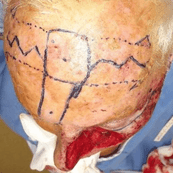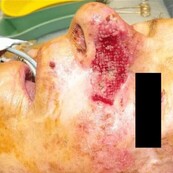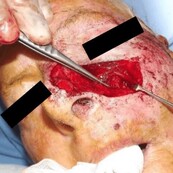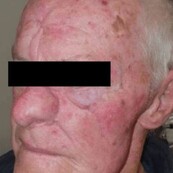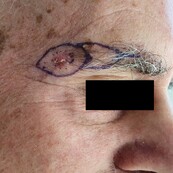Head & Neck Skin Cancer
Squamous Cell Carcinoma (BCC)
SCC is the second most common type of skin cancer, typically developing on the face, ears, lips, scalp and hands where they often present as slowly enlarging ulcers or scabs over months to years. Aside from common risk factors associated with head and neck cancer, SCCs can develop over excessive tobacco and alcohol use, particularly for SCCs of the oral cavity and throat. Certain strains of human papillomavirus (HPV), especially HPV type 16, are also associated with SCCs of the oropharynx.
While SCCs typically originate from sun-damaged skin, such as solar keratoses, they can appear as various manifestations including small bumps, nodules, crusty spots, ulcers, or persistent sores that do not heal. Unlike BCCs, SCCs have a higher potential to spread to nearby lymph nodes, particularly in areas like the neck, although this occurrence remains relatively uncommon. Depending on the location and size of the tumour, symptoms may include persistent sore throat, difficulty swallowing (dysphagia), ear pain, hoarseness, or a lump or mass that can be felt.
Treatment for SCCs involves surgical excision performed by a skilled surgeon to ensure complete removal with clear margins, aiming for both effective cancer control and optimal cosmetic outcomes. Early detection through regular skin examinations and prompt intervention are crucial in managing SCCs to prevent potential complications and improve prognosis.
